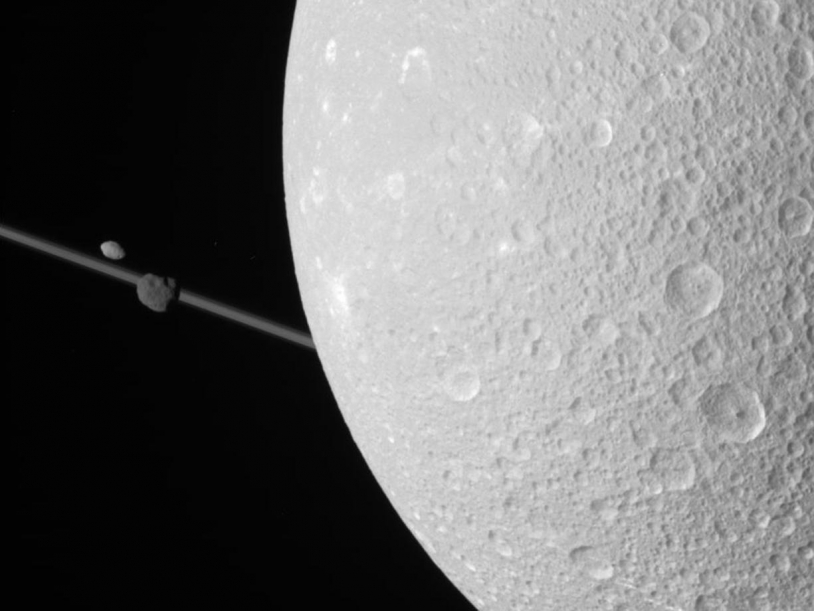Update: 03/28/2012

Oxygen discovered around Dione
The Cassini probe CAPS (Cassini Plasma Spectrometer) in situ measured a low density of ionized oxygen molecules around the Saturn's icy moon Dione.
The density of this extremely tenuous "atmosphere" (less than 1 molecule in 10cm3) is equivalent to the Earth's one... at an altitude of 480km. For comparison, the International Space Station is orbiting 400km over the Earth's surface. That is why scientists prefer to speak about exospheres.
This oxygen seems to be produced by the energetic particle bombardment which free oxygen molecules when hitting the ice-covered moon surface.
"The energetic particles coming from solar wind as well as photons hit the bodies' surfaces which are not protected by any magnetic field", Francis Rocard, CNES' solar system specialist, said. "Those particles excite the water ice's molecules and brake them down. Produced radicals can recombine and synthesize, among others, molecular oxygen".
Is it a common phenomenon?
Dione is not the only Saturnian system's body to present an oxygen exosphere. In fact, the Cassini probe, thanks to its spectrometers, already confirmed that Saturn's icy rings and another icy moon, Rhea, were freeing oxygen.
This is reinforcing the idea of a quite common presence of molecular oxygen in the Saturn's system and more generally when energetic particles interact with water ice.
"It also suggests that this oxygen exosphere phenomenon could be rather frequent and therefore be applicable to other icy moons", Francis Rocard added.
The Cassini probe of NASA/ESA/ASI was launched in 1997 to study the Saturnian system and in particular the Saturn's rings as well as its moons such as Titan. With a dozen of remote and in situ analysis instruments on board, the probe is orbiting Saturn since July 2004.
Article references
R. L. Tokar, R. E. Johnson, M. F. Thomsen, E. C. Sittler, A. J. Coates, R. J. Wilson, F. J. Crary, D. T. Young, G. H. Jones, Detection of exospheric O2+ at Saturn's moon Dione, Geophysical Research Letters, 2012; 39 (3)
Contact
- Solar system program scientist: Francis Rocard